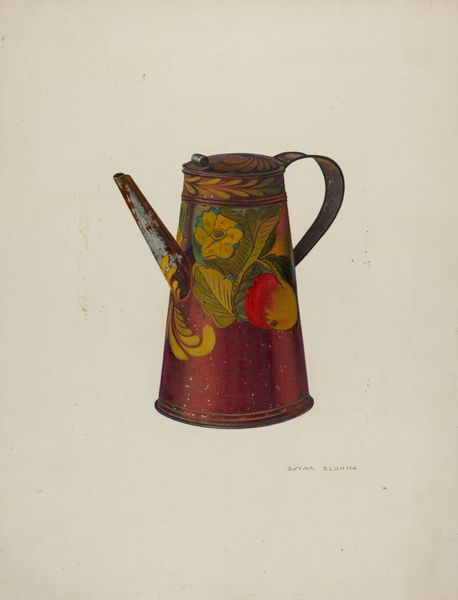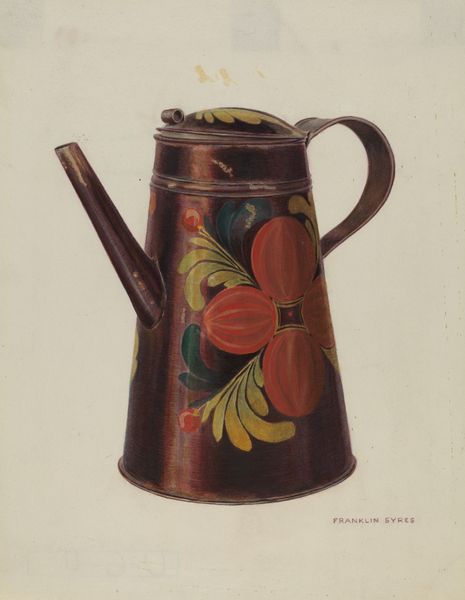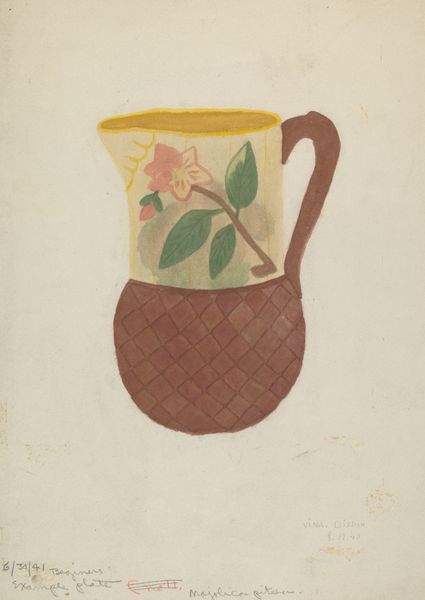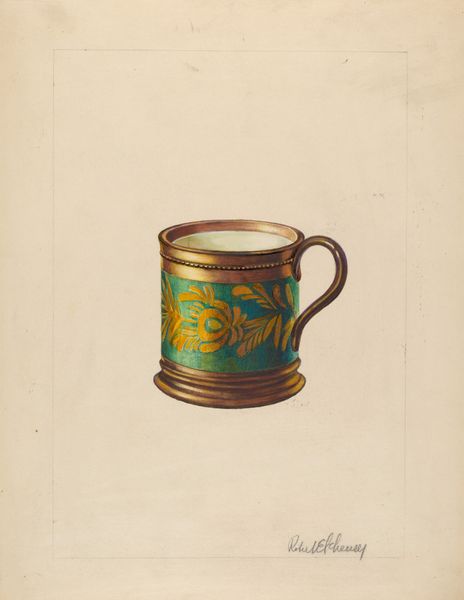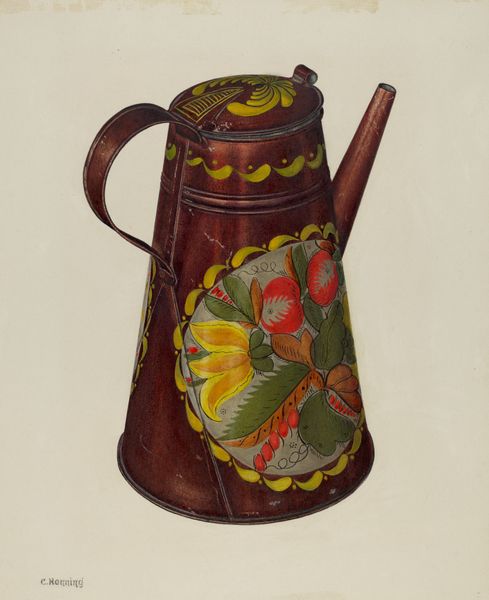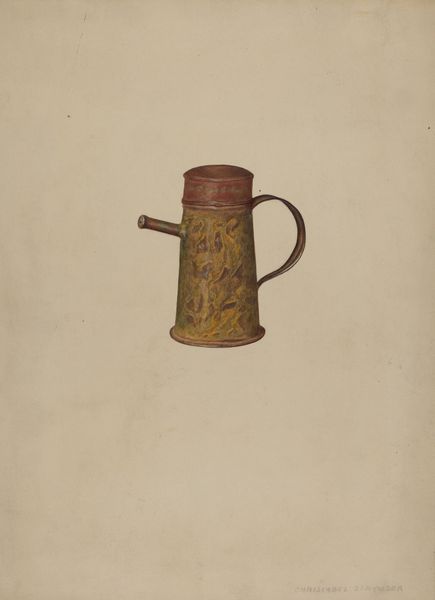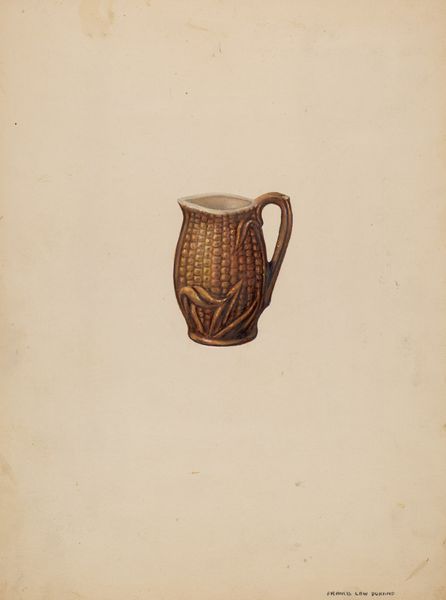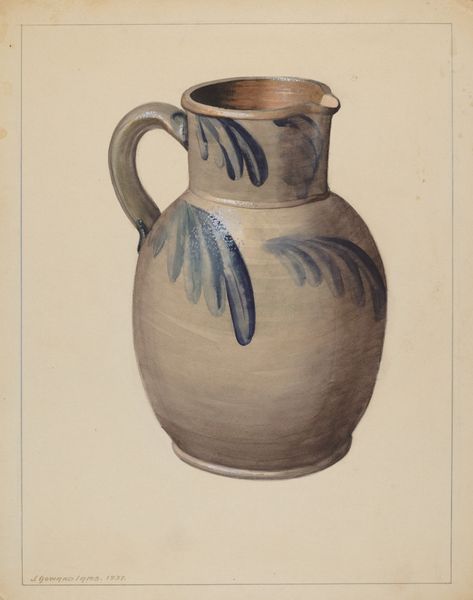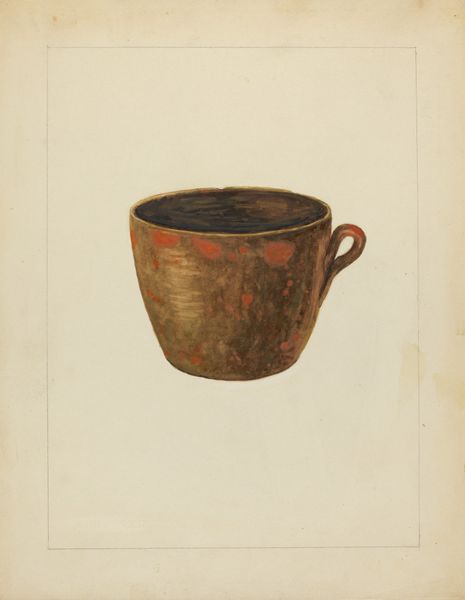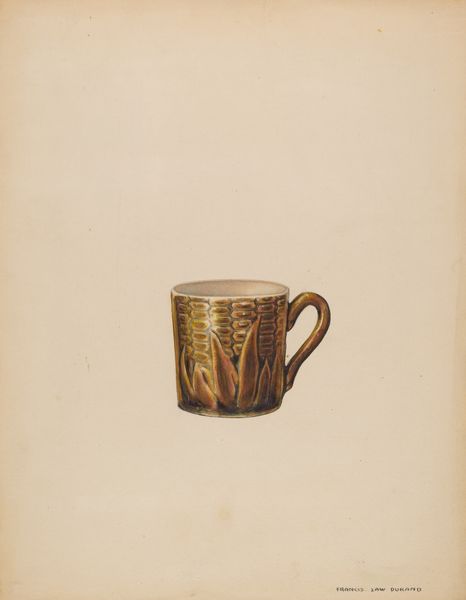
drawing, watercolor
#
drawing
#
caricature
#
caricature
#
watercolor
#
coloured pencil
#
folk-art
#
watercolour illustration
#
decorative-art
#
watercolor
Dimensions: overall: 29.2 x 22.9 cm (11 1/2 x 9 in.) Original IAD Object: 4 3/4" high; 2 15/16" in diameter
Copyright: National Gallery of Art: CC0 1.0
Curator: Let’s take a closer look at this watercolor and colored pencil drawing by Mildred Ford, entitled "Toleware Syrup Pot," created around 1941. What strikes you about it? Editor: It's oddly comforting. It's like looking at a childhood memory of Grandma's kitchen, but one filtered through rose-tinted glasses, with slightly off-kilter perspectives. Curator: Absolutely, it plays into familiar tropes of "folk art," doesn’t it? Ford seems to deliberately mimic the naive, decorative style, conjuring a sense of idealized rural life, or a very curated version of "homeliness," through this quaint depiction. Note how she leans into the color scheme as well. The imagery associated with toleware speaks to the tradition and perhaps the "Americana" that was popular in the early 40’s. Editor: It’s charming but also makes me question, why this? The choice to immortalize an everyday object…it borders on caricature, really. The pot itself is solid but then adorned with this sort of explosive floral motif, which feels very playful and expressive. Curator: The symbols become doubly impactful when presented in such a medium. The toleware itself signifies utility and a specific type of crafted beauty—common items transformed into canvases for decorative painting. The stylized flowers speak to notions of growth, home, and perhaps a subtle yearning for simplicity amidst the turmoil of the war years. Remember, it's just after the Depression era. Editor: So it's like a yearning for that idealized simple life of the rural worker, even if the reality wasn't always so sweet? Like the syrup the pot is meant to hold. It’s quite clever actually, this juxtaposition of something seemingly homespun reflecting complex social sentiments and cultural continuity. Curator: Precisely. The act of rendering it in watercolor and colored pencil softens the metallic hardness of the original toleware. It turns it into a relic, a document, a sentimental object that almost has emotional and historical importance. Editor: I came expecting quaint kitsch and now I see quiet reflection on cultural values. It makes you wonder what other everyday objects hold that level of weight. Curator: A wonderful point, I hope we can now all approach folk art with a more critical yet still appreciative eye.
Comments
No comments
Be the first to comment and join the conversation on the ultimate creative platform.
